Offbeat Locations You Must Visit Before You Turn 30
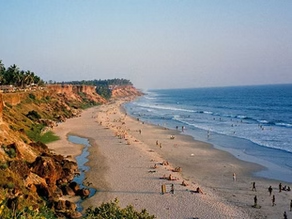
India is a land of adventures. Imagine not having an adventurous travel story to tell when you reminiscence your youth. There are so many stories waiting to be written in the streets of India. The true beauty of the country lies within some locations that are forgotten with time. It’s time to hurry up and make your own story through the lanes of India. travel explore and discover these amazing offbeat places you must visit in India before you turn 30. Varkala beach Chandratal Gokarna Narkanda Kasol Varkala Beach via Holidify.com Varkala is a calm and quiet place located near Tiruvananthapuram. The beach’s serene beauty and waters are calming to the soul. The beach is known to be sacred and its water is considered holy due to its medicinal and curative properties. Major attractions of the place include a 2000-year-old shrine Janardhanaswamy Temple which stands on a cliff overlooking the beach. The place also attracts pilgrims from all over the country to the samadhi (resting place) of Sree Narayana Guru (1856 – 1928). Nearest Railway station: Varkala, about 3 km away Nearest airport: Trivandrum International Airport, about 57 km away Chandratal Lake via Transforming Travel Located in the Spiti Valley Chandratal Lake is known to be the most stunning lake in Himachal Pradesh. The landscape of the lake is moonlike which adds to its beauty. The lake is located at an altitude of 4270m and its route involves a trek full of adventure in The Himalayas. The region also has folklore of its own which you can explore during your trek. The Chandratal lake is a perfect blend of adventure and sightseeing which makes it a must-visit location. Nearest Railway station: Joginder Nagar railway station, 290kms away Nearest airport: Bhuntar, 180km Gokarna via Holidify.com This city is located in the Uttara district of Karnataka. The name of the city translates to cow’s ear, this is due to the mythological story related to it where lord shiva takes the form of a cow. The region is embedded with beautiful landmarks and tourist attractions such as pilgrimage sights, beaches, and stunning waterfalls Gokarna is home to the oldest temples. Its architecture and scenic beauty attract many tourists from all over the world. This is also the perfect site to enjoy water sports such as scuba diving, surfing, snorkeling, and skiing. Nearest Railway station: Joginder Nagar railway station, 290kms away Nearest airport: Bhuntar, 180km Narkanda via travel + leisure india Located 60 kilometers from Shimla, Narkanda is a paradise for travelers and tourists from all over the world. The picturesque view of the town and its overall peaceful aura makes the town a perfect spot for relaxation and retreat. Nakrkanda is also home to the beautiful Tanni Jubar lake. The beauty of the town makes it a photographers dream. You can also hike up your adrenaline by engaging in various activities such as trekking and skiing in Narkanda. Nearest Railway station: Shimla, 65 km Nearest airport: Jubbarhatti airport, 55 km Kasol via moxtain.com Kasol is the place to be if you love nature and never back down from a little adventure. Located 23 kilometers from Bhuntar the town is situated near the banks of the river Padmavati. Kasol is famous due to its adventurous treks. The amazing environment and the picturesque view of the town make treks in Kasol special. The town is inhibited by people who migrated from Israel and it gives the essence of their culture. It also has a flea market from where you can buy souvenirs and art pieces. Nearest Railway station: Jogindar Nagar,144 km Nearest airport: Bhuntar, 31kms So what are you waiting for? Grab your bags and add these cities to your itinerary and go for the adventure of your lifetime.
The true story of Kashmir narrated by its Villages
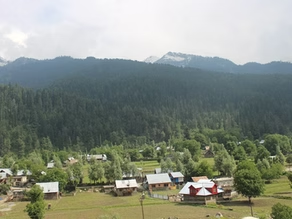
via India.com Kashmir has been an important landmark throughout the history of time. It is known not only for its scenic beauty and tourism but also for its history and heritage. it not only has a sacred significance but was also an important part of the silk route and has sparked conflict multiple times between India and Pakistan. The beauty of Kashmir comes from its beautiful landscapes, its roads, and its villages. These villages are where the true story of Kashmir resides. Here’s a list of villages that are protagonists in this story of Kashmir. Hunderman Village Tyakshi Village Turtuk Village Teetwal Village Jourian Village Hunderman Village via TripAdvisor Stuck between the turmoil of two rival countries and located at the border of the two is the Hunderman village. The village narrates the story of the brutal effects of the India-Pakistan conflict on the lives of people living at the border. Hunderman has witnessed four wars and has been snatched by one country to another repeatedly. The village which was once a part of Pakistan from 1947 to 1971 was made a part of India causing most residents to flee and most families to separate. The village was also left astray between a standoff between the two countries in 1965. To recall the story of Hunderman and its struggle the villagers have made a museum named “Unlock Humnderman” which holds a collection of old artifacts family pictures and letters sent across the border in an effort to surpass the barriers between the two countries through ink and paper. Tyakshi Village via Rebelion Voice The 1971 Indo Pak war left scars on both nations and paved the way for their future. However, the village that experienced the atrocities of the war firsthand is still nowhere to be seen in this future. In the war, India seized five villages from Pakistan, among which was the Tyakshi village. Although the village has been a part of the country for almost 50 years, there is no legal documentation and the villagers are still forced to prove their citizenship. The Tyakshi village shows the honest and raw story of the war and its aftermath in the border areas of Kashmir. Turtuk Village via The Land of Wanderlust Sitting at the far end of the Nubra valley, near the line of control lies Turtuk. The village was once a part of Pakistan and still has preserved its cultural similarities with the Country. After the war of 1971, the village was seized by the Indian army and it was never returned. Turtuk is a prominent tourist spot in the state due to its scenic beauty and proximity to the border. The village is at a lower altitude of a mere 2900 m than the rest of the high-altitude area allowing the villagers to farm apricots and walnuts creating a beautiful view of the landscape. The village is also famous for its Mosques which add to its ethenic ‘Balti’ roots along with its irrigation channels and traditional dishes. Teetwal Village via Kashmir Life The Teetwal village is a peculiar village located half in Pakistan and half in India. The village is divided into two by the Kishan Ganga river which also acts as the border between the two countries. The people of Teetwal although separated by countries, still have a deep connection within themselves. The village is a real-life example of love transcending borders. Relatives and families were given permits to meet each other at a “meeting point” on the bridge that joins the villages under the supervision of the Indian army. However, the permits were removed after the Pulwama attacks. The villagers have found alternative ways, they now sit at the narrowest banks of the river and chat. It is truly amazing how the hatred between the two countries only acts as a small barrier of water for them and their bond. Jourian Village via Hindustan Times Jourian is a village located about 55 kilometers from Jammu and has a population of about 5000 people. The village was a hotspot in the battle of Chamb that happened in the Indo-Pak war of 1971. The battle left some dreadful memories for the residents of the village. The village was bombarded by Pakistan in the battle and the residents were asked to vacate their homes and run to save their lives. In no time the village was full of deceased bodies and screams of children men and women in terror. The people of Jourian have experienced the pain that war comes with and will never recover from it. This was just a glimpse of the vast historic background of Kashmir. The villages of the area are filled with stories of love, life, and loss. however, these stories are best experienced firsthand, narrated by the villagers themselves so it touches the heart. So grab your bag and go on this journey to rediscover Kashmir and its heritage.
7 Mouthwatering Dishes You Must Eat When in Ladakh
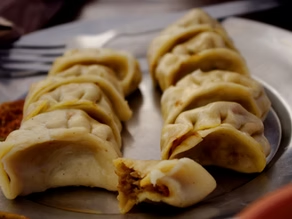
Ladakh is a region with great historical significance and rich and diverse culture. The food of a region gives you insight into its culture and practices. Sometimes food also has sacred importance. The local cuisine of Ladakh is filled with flavours of organic spices with a touch of the region’s past. The mouth-watering dishes of Ladakh will surely give your taste buds a show. Here is a list of food items you must try when you visit Ladakh. Momos Chhu Tagi Tingmo Butter Tea Chhang Khambir Skyu Momos @Learner From Mysore on Flickr One of the most competitive contenders in the “Best street food in India category”, Momos are a must-have dish while you visit Ladakh. Momos are dumplings stuffed with minced meat or vegetables covered in dough and are loved by everyone. In Ladakh, momos are also served on special occasions or occasions of sacred importance such as the Losar Festival. Chhu Tagi @ Dickeydol Recipe on Facebook Chhu tagi is a rich nutrition Ladhaki dish that translates to water bread (the “chhu” means water and “tagi” means bread). Chhu tagi is made by cutting the dough into small circles and forming them into bow shapes and boiling them in a broth. The Chhu Tagi is often served to peasants during harvest season since it is a heavy meal. The soup is made of goat trotters and vegetables. Tingmo via Eater NY Tingmo is a staple food for the people of Ladakh. It is a steamed bun that can be eaten with dal or vegetables it has no filling and can be eaten for breakfast lunch and dinner. Tingmo is also known as Timok in Ladakh and is a soft and fluffy bun made with whole wheat. The dough is folded into a spiral shape and steamed. It is best served hot within 15 minutes after preparation. Butter Tea via Spinetourer.com Butter tea is one of the most important drinks in Ladakh. It is served during every event of importance including sacred events, weddings, and festivals. Butter tea not only is very tasty but also healthy as it keeps the body warm and hydrated at areas of high altitude. The tea is prepared with butter, milk, and salt and is churned repeatedly. It is popularly known as Gur Gur chai. Chhang via Whats hot Ladakh’s local bear is known as Chhang. It is a drink made by fermenting barley and has an alcohol content of 5 to 7 percent, Chhang is consumed and given to guests visiting Ladakh. It is also a popular drink served during special occasions such as marriages and festivals. It is also offered during wedding prepositions. It is a drink of sacred importance as it is offered to buddha by dipping ur finger and flicking it upwards. Khambir via treebo hotels Khambir is one of the local wheat bread eaten by the people of Ladakh. It is a whole wheat bread having a thick crust and is a staple meal in the region. The bread is made by using the method of fermentation and is kept overnight after which it is baked on fire. The lactic acid gives a subtle sour taste to the bread. Khambir can be eaten with vegetables, meat, and even butter tea. Skyu via LehLadakhIndia Ladakh being an area located at a high altitude has a predominant diet consisting of meat and fish. However, some of the delicacies of the region also consist of dishes only made from vegetables. One such dish is Skyu. Skyu consists of vegetables and dough which is kneaded into thumb-sized flattened balls and boiled into a broth. Skyu is a high-calorie dish and is served during winters when the weather goes below freezing point. Ladakh is the land of vibrant culture, picturesque landscapes, and amazing scenery. The food served in the city adds to the reasons one must visit the city. These Ladakh dishes will surely quench your appetite and you wont stop asking for another serving.
Exploring Mumbai with a Student Budget
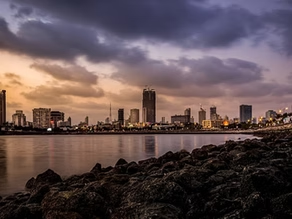
Mumbai is known as the city of dreams and surely is a dreamland with its mesmerizing vibe and fantastic nightlife paired with the city’s historical importance. Mumbai is also one of the country’s most important education hubs. The city is a residence to lakhs of students who yearn to enjoy and explore the city. However, the student budget isn’t much and must be taken into consideration. Here is a list of the fun yet cheap activities to do in the city this weekend. via Travel.Earth Imagica theme park Long drive in Bandra Worli sea link Hanging out at the Marine Drive Watch DDLJ at Maratha mandir Visit the Gateway Of India Shopping at the Causeway Market in Colaba Cycling tour around the city Visit the Haji Ali Dargah Go to the famous Sidhivinayak temple Imagica Theme Park via imagicaaworld.com Imagica theme park is one of the most thrilling and fun activities to do around the city. The park caters to people of all age groups. It is well equipped with fun rides, theme parks water parks and is the best spot for a weekend getaway. The park also has a lot of hotels that provide delicious lip-smacking food. Long Drive on the Bandra Worli Sea Link MakeMyTrip The Bandra- Worli sea link is one of the most beautiful places in Mumbai. Originally known as the Rajiv Gandhi sea link, a drive through the bridge will make you mesmerized by the beauty of the horizon where the city meets the ocean. The Bandra Worli sea link was made to reduce the distance between South Mumbai and its Suburbs and successfully does so while also giving passengers the time of their lives. Hanging out at the Marine Drive via Budget Wayfarers Marine drive is the most loved spot by people and tourists in the city. It is connected to the ocean by forming a “c” shaped bay which is adorned by rocks and a pathway. Marine drive is the best spot to visit to get away from the best spot to visit to escape your hectic life and relax for a while. The beauty of the place added with the subtle sound of waves of the ocean take your mind away from your worries. Watch DDLJ at Maratha Mandir via IndiaTimes Dilwale Dulhaniya Le Jayenge (DDLJ) is an iconic Indian movie that has been screened in the Maratha Mandir theatre in Mumbai for over 25 years. Shah rukh khan and Kajol starer was the most famous movie of its time and even now is adorned by youngsters of the country. Watching DDLJ in Maratha mandir is a Bollywood cultural experience one must-have when in Mumbai. Visit the Gateway Of India via Guide Tour The Gateway Of India was made in the early 19th century to commemorate the landing of the first British king to set foot in India. The Gateway Of India tells the story of a major part of the country’s history. The monument hence becomes of great historical importance. You can also board a fairy ride and watch the Gateway Of India from the ocean during your visit. The monument is made near the port and you can see many boats and even ships at a distance. Shopping at the Causeway Market in Colaba @padhaaro on pinterest The Colaba causeway market is every street shopper’s dream destination. The market is located between Colaba and Old Woman’s Island. The market is located in between buildings that were built around British rule and depict the ancient architecture of the city. Colaba market also has cheap but trendy clothes accessories miniatures toys and is the best place to shop for jewelry. Cycling tour around the city MySA Mumbai is considered to be one of the busiest cities in India. However, the city’s nightlife is much calmer. Nights in Mumbai are filled with subtle winds of the ocean the quiet after the storm and amazing buildings and spots illuminated by aesthetic lamp lights. A Cycling tour in south Bombay will show you the most iconic spots in the city such as Colaba, Bandra-Worli sea link, etc. of the city in its best form. Visit the Haji Ali Dargah via Adotrip The Haji Ali Dargah was made in 1916 on top of high lever rocks. It is located near the Mumbai shoreline and is home to the tomb of the Muslim saint Haji Ali Shah Bukhari. The Haji Ali dargah also holds a masjid inside it and is visited by people of all religions due to its beautiful structure and spiritual peace. The Indio Islamic structure is one of the sacred gems located in Mumbai with not too much weight on the pocket. Go to the famous Sidhivinayak Temple via MumbaiMirror Originally built in 1801 the siddhivinayak temple dedicated to worshipping lord ganesha is one of the mist famous temples in hinduism. The temple is a gigantic structure which is home to the ganesha deity as well as huge amount of gold that adorns the thorn of the deity. People from far away as well as from the city come to visit this templem with about 2 lakh people walking its steps everyday. The sidhivinayak temple is a sacred landmark in the city one must visit to get its full experience.
Must Visit Cities and Pride Marches in India to Celebrate the LGBTQIA+ Community
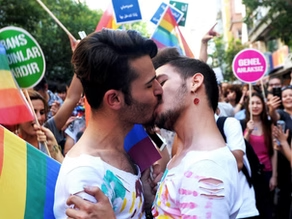
via askmen Pride is a global festival celebrating the existence and identity of those among the LGBTQIA++ community. Pride month is celebrated by conducting various pride parade shows and events centered on the LGBTQIA+ community as an act of resistance painted in rainbow colors. Pride is a protest against unjust policies and a demand for equality and inclusivity. This pride month let’s look at the cities that shaped the way for pride in India. 1. Mumbai via cjp.org.in Mumbai, the city of dreams and aspirations is also known for its open-mindedness. Mumbai has played an integral part in the history of the LGBTQIA+ community in India. The city hosts its annual Queer Azadi March which aimed to protest against article 377 of the constitution. There is a prominent community of LGBTQIA+ people in Mumbai who organize events and marches to represent the community such as the KASHISH International Queer film festival which is also the biggest film festival in South Asia. via WallpaperAccess The residence of the gateway of India, Mumbai is not only a travel destination but a place where dreams come true. You can see a part of Indian history through the architecture of buildings in the southern part of the city which were made in the post-colonial era. The most enjoyable part of the city would be its Nightlife with clubs and bars and an amazing drive-through of the streets of Mumbai. Pride march: Queer Azaadi Mumbai Places to visit: Marine Drive, Taj Hotel, Gateway of India, Sidhivinayak Mandir, Imagica Theme Park 2. Chennai via ThePrint The Chennai Rainbow Pride March has been held since 2009 by the members of the LGBTQIA+ community with pop and color under the Tamil Nadu Rainbow Coalition to celebrate Pride with full force. The march was held in resistance to inhumane practices such as conversion therapy against the community. Chennai Rainbow Pride is the only pride march that coincides with international pride month in India. Chennai also hosts the ‘Reel Desires’ where panelists discuss LGBTQIA+ empowerment and inclusion. via TheWire Chennai is the sixth-largest city in India and offers the best places to explore and rediscover India. Embedded with ancient temples beautiful beaches and scenic locations this city is also home to the best gold market in the country. Chennai is a perfect place for art freaks with its museums and art galleries. Chennai is a hub for the best south Indian food. Chennai has diverse cultures with respect to the different socio-economic classes dwelling in the city. Pride march: Chennai Rainbow Pride Places to visit: Marina Beach, VGP Snow Kingdom, Kapaleshwar Temple, ISKON Krishna Temple 3. Kolkata Hindustan Times Kolkata has a deep connection with resistance as it is home to the start of many human rights movements in India such as feminist and Dalit rights. This historic city is where the first pride march of India was held in 1999 named The Friendship Walk. The Kolkatta Rainbow Walk paved the way for an LGBTQIA+ revolution in the country with the community demanding equal rights and inclusivity. It also hosts the oldest LGBTQIA+ film festival in India. via WallpaperUse Kolkatta is home to the most beautiful British architecture and is named the cultural capital of India. The busy streets of the city are brimming with creativity. Home to Rabindranath Tagore, Kolkata has many must-visit temples mosques, and churches co-existing peacefully. The city has a lot of ghats where you can relax and unwind as well as enjoy the amazing food. Pride march: Kolkatta Rainbow Walk Places to visit: Victoria Memorial, Park Street, Dakshineswar Kali Temple, Howrah Bridge, Eden Gardens 4. Delhi via OpIndia Delhi took the first few steps for LGBTQIA+ empowerment in India with the Delhi high court declaring section 377 which criminalized homosexuality, as unconstitutional and against human rights. The Queer Pride Parade in Delhi started in 2007 and happens annually to celebrate lesbian gay bisexual and trans rights as well as the rights of people over the spectrum. andBeyond Delhi being the capital city of the country serves as a major tourist attraction due to its historic and political importance. the city has many important monuments such as the red fort, the Qutub Minar, and Humayun Tomb. The food in Delhi ranges from Mughlai to street food and gives your taste buds an amazing experience. The markets in Delhi have handicrafts from all over the country and are full of vivid colors and cheap items. Pride march: Delhi Queer Pride Places to visit: Qutub Minar, Swaminarayan Akshardham, Gurudwara Bangla Sahib · Humayun’s Tomb, Lodhi Garden 5. Bengaluru via ThePrint Bangaluru is one of the most LGBTQIA+ friendly cities in India mainly due to its inclusive work environment and open culture. Bengaluru has hosted the Namma pride march annually since 2008. The Namma Pride March was the first to hold a Lesbian Bike on Dykes event in its 2013 parade. It also hosts its annual Queer Film Festival to celebrate Lesbian Gay and Trans cinema. via WallpaperAcess Bengaluru is known as the garden city of India and the country’s Silicon Valley. The city is quite progressive and has many must-visit places hidden within it. The city is famous for its nightlife with the city coming to life after night. The city will surely mesmerize every visitor. Pride march: Namma Pride March Places to visit: 1. Lalbagh, Cubbon Park, Ulsoor Lake, Bangalore Palace With annual pride parades organized all over India to celebrate the LGBTQIA+ community, it is also important to acknowledge their struggles through their journey towards a less homophobic India. So enjoy flaunt your flag and scream out loud to show the ‘’We Exist and enjoy pride month in these colorful cities with their unique culture and LGBTQIA+ friendly environment
Places to Visit on your Srinagar to Leh Roadtrip
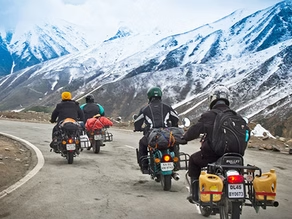
Ladakh is no less than heaven for a traveler with its picturesque scenery spiritual monasteries and a history linked with the silk route. The Srinagar Leh highway is the most suitable metaphor for the road to heaven on earth. With great mountain ranges on either side and the cool and dry climate of the region, the Srinagar to Leh highway is the perfect place to execute your dream road trip. banbanjara.com Srinagar to Leh route There are two routes mainly taken while traveling from Srinagar to Leh on road: Srinagar – Sonmarg – Zozi La – Drass – Kargil – Mulbek – Lamayaru – Saspol – Leh Srinagar – Sonmarg – Zozi La – Drass – Kargil – Batalik – Dah – Leh However, since this is a road trip you can choose your own route with a few detours too. Srinagar to Leh distance The Srinagar to Leh roadtrip will make you cover a distance of approximately 434 Km. the srinagar to Leh road is full of adventures and you may have to drive across some difficult conditions but it is worth the thrill. The Srinagar to Leh road condition is quite stable and good. Here is a list of places to visit on this exciting roadtrip : Lamayuru monastery Magnetic hills Sonmarg Nubra valley Kargil Diskit monastery Pangong Lake Mulbekh Lamayuru monastery Anoop Negi @ Flickr Located on the Srinagar- Leh highway about 127km from Leh, the Lamayuru monastery is a must-visit place for sightseeing. It is one of the largest monasteries in the region and is known for its ‘lunar’ landscape more popularly known as the Lamayuru moonscape. The Lamayuru moonscape provides fascinating visuals of mesmerizing geological formations. The monastery is affiliated with the Drikung Kagyu school of Buddhism. Lamayuru means ‘sauwastika’; a symbol of eternity. History states that the Indian scholar Naropa founded the monastery in the 11th century by drying up a lake. The Lamayuru monastery can easily be covered within a day while visiting Leh. Distance from Leh– 114.4 km Magnetic hills veenaworld.com On the Srinagar- Leh highway you might come along many amazing wonders of nature. One such wonder is the magnetic hill marked by a yellow boar which reads “Magnetic Hill: The Phenomenon that Defies Gravity”. It indicates you park your vehicle in a white box. Once parked, the vehicle will automatically move at a speed of about 20km/hr without turning the engine on and appear to go uphill. Located about 14,000 ft above sea level the magnetic hills are a wonder of nature and a must-visit place for anyone traveling along the route. The hills are also located between a magnificent landscape making it a picturesque location. Distance from Leh – 26.7 km Sonmarg akshartours.com Sonmarg is the ultimate heaven for lovers of nature. Located at an altitude of about 2800 meters Sonmarg is a hill station in the majestic Himalayan Ranges. The meaning 0of the word Sonmarg is “The Medoe of Gold” and is known for its scenic beauty and breathtaking views. The flower-laden valley of Sonmarg and the Thajiwas Glacier are major tourist attractions in the hill station. It also serves as a camping space for travelers doing the “Amarnath Yatra”. Other than the amazing scenery Sonmarg also offers a bunch of activities such as trekking and camping. Pay a visit to the hill station of Sonmarg on your journey through this highway and return with a bunch of memories. Distance from Leh- 339.4 km km Nubra valley TripAdvisor.com Located in the northernmost part of Jammu and Kashmir, the Nubra valley is heaven to the eyes. Its scenic beauty and mesmerizing landscapes are what make Nubra special. The Nubra valley is situated about 150 km from Leh and is popularly known as the orchard of Ladakh. Nubra isn’t just an epitome of scenic beauty but also encloses a history of the ancient Buddhist tradition, making it a significant tourist attraction. Nubra provides a variety of exciting adventures, beautiful monuments, and amazing food to satisfy a traveler’s heart. It is the gem of Ladakh’s crown. The mesmerizing visuals, the thrilling adventures, and the deep-rooted tradition make the valley a perfect travel destination. Distance from Leh-159.5 km Kargil Telegraph India The city of Kargil, popularly known as the gateway to Ladakh is situated near the line of control. The city for popular for its involvement in the Indo-Pak conflict of 1999 before which it was seen as a major trade center of the past in the silk route. Kargil is the second largest city of Ladakh and is placed at an elevation of 8000ft. Kargil is located in the Zanskar ranges of the Himalayas and hence it is surrounded by beautiful scenery. The landscape of the district is filled with rugged mountains and the climate is cold and dry. Apart from being historically important, the district also consists of many monasteries, buddha statues, and mosques. The district also provides a bunch of activities for a traveler. Distance from Leh- 216.4 km Diskit monastery @grooveriderz on Freepik The origins of the Diskit monetary trace back to the 14th century making it the oldest monastery in Ladakh. It is situated on a hill 3144 meters above the flood plains of the Shyok river The monastery is home to the famous Maitreya Buddha statue, a significance of world peace and love embedded just below it. The statue is decorated with traditional patterns and vivid colors making it appealing to the eye. The monastery is a hub of ancient literature. It also holds statues of fierce deities and has a massive drum placed inside a hall. You can find many shrines and transcripts as well as generation-old paintings in this monastery. The monastery is situated on top of a hill in Nubra valley and is easily approachable by road. Distance from Leh- 115.4 km
Chennai Express Shooting Locations: You Must Visit At Least Once
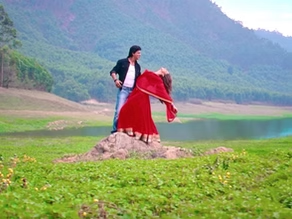
The movie Chennai Express is the go-to movie if you want a good laugh. It has perfect comic timing, songs everyone can vibe to, and most importantly heart-melting romance but what makes the movie so special are its mesmerizing visuals. The movie is shot in the backdrop of stunning locations. Although the scenes in the movie give the audience a glimpse of these beautiful locations across India however to fully enjoy these amazing places one must visit them. Here is a list of some of the picturesque Chennai Express shooting locations that you must visit. Wai, Satara District Dudhsagar Falls Munnar Tea plantations Meesapulimala Vattamalai Murugan Temple Wai, Dakshin Kashi – Image Source: Tripoto Wai, Satara District Popularly known as ‘Dakshin Kashi’ due to the presence of temples about 100 years old, the town of Wai is located at an altitude of 701m above sea level on the Krishna river. Wai is popular for its scenic beauty and the amazing view of the Sahyadri Mountains ranges. Wai has appeared in about 250 movies and is a one-hour drive from Panchgani. It also has 7 ghats of the Krishna river, the most popular ghat is the one where the Dholya Ganapati temple is situated. The temple is said to have equal importance as the Sidhivinayak temple in Mumbai. The town’s climate is also cool making it a perfect spot for refreshment. Scene: The Kombam village where Rahul and Meenama stayed is actually Wai. The shooting of the song ‘titli’ was also done here. Location: Wai, Satara District, Maharashtra, India Personalize a travel experience Dudhsagar Falls – Image Source: Seawatersports.com Dudhsagar Falls Located about 60 kilometers from Panaji, The Dudhsagar Falls are a wonder of nature. The Dudhsagar falls are one of the tallest waterfalls in India with a height of 1017 feet and a width of 100 feet. The waterfall can be seen on the Belagavi- Vasco Da Gama railway route which is the cause of the iconic train scene in the movie. Locally known as ‘Tambdi Surla’, this majestic waterfall is situated in the Bhagwan Mahavir Wild Life Sanctuary on the river Mandovi in Goa. Although not so spectacular in summer, in the rainy season the water appears like milk and hence the waterfall is named ‘Dudhsagar’. The Dudhsagar Falls is the fifth tallest waterfall in the country and provide the best visuals. Scene: Rahul and Menamas fathers first meeting. Location: Sonaulim, Goa Munnar Tea Plantations – Image Source: Holidify.com Munnar Tea Plantations The Munnar tea plantations look as if a blanket of green velvet is spread on the ground. The greenery and the amazing view of the place make it an awesome spot to click some pictures for your next Instagram post. This is where the song ‘Kashmir Main Tu Kanyakumari’ was shot. The Munnar tea plantations are located on the Munnar hill station; one of the top hill stations in Kerala. The Munnar tea plantations are mainly owned by TATA which has also set up a tea museum in the hill station to highlight the aspects of tea growth and plantation. You can also see the chocolate plantations and visit the chocolate factories located nearby. The Munnar tea plantations are heaven for someone who loves greenery. Scene: Shooting of the song ‘Kashmir Main Tu Kanyakumari’ Location: Munnar, Kerala Suggested reading: Things to do in Munnar for an Adrenaline Kick Meesapulimala – Image Source: keralablogexpress.com Meesapulimala The Meesapulima is the second-highest peak in the western ghats. Located in the Ikkudi district of Kerala the peek is the location for the shooting of the ‘Titli’ song. Present at an elevation of 2640 meters this peak is a must-visit place for lovers of trekking. The trek includes nine hills and starts from the base camp of Rhodo valley. The valley derives its name from Rhododendron Trees. Commonly found in the area. The Meesapilima is famous for its thick forest and shrubs. The amazing view from the peak is mesmerizing and as beautiful as Shahrukh Khan’s romance. Scene: The shooting location of ‘Titli’ song Location: Kannan Devan Hills, Tamil Nadu Vattamalai Murugan Temple – Image Source: fallinginlovewithbollywood.com Vattamalai Murugan Temple The 500-year-old Vattamalai Murugan Temple in Tamil Nadu is an architectural and spiritual marvel. The temple is located on top of a hillock and has about 100 steps that must be crossed to reach the deity. This is the reason for the famous ritual scene from the movie Chennai express. The temple is dedicated to Lord Muruga and is beautifully adorned with images of Muruga and Devsena. The temple is prominent as it has been visited by saint Arunagirinathar who eulogized the glory of the Lord and Kshetra. The temple also has sculptures of important Hindu deities and a large broad lotus on the Maha Mandapam. Scene: The 100-step ritual scene. Location: Kangayam – Dharapuram Rd, Vattamalai, Tamil Nadu Pin It! FAQs 1. Where was Chennai Express filmed? The film was shot in various locations across India, including Mumbai, Goa, Pune, Kerala, Tamil Nadu, and Chennai. 2. Which temple is shown in Chennai Express? The temple shown in the Chennai Express movie is Vattamalai Murugan Temple in Tamil Nadu. 3. Was Chennai Express shot in Dudh Sagar falls? In the movie, the iconic train scene was filmed at the waterfall on the Belagavi-Vasco Da Gama railway route. The waterfall is none other than Dudhsagar Falls, which has become very popular since the movie was released. 4. Which bridge is shown in the Chennai Express movie? The bridge shown in the Chennai Express movie is Pamban Bridge. It connects the town of Mandapam on mainland India with the island town of Rameswaram. 5. What are the top 5 shooting destinations in Chennai Express? The top 5
9 Must-visit Festivals in Ladakh (2022 List)
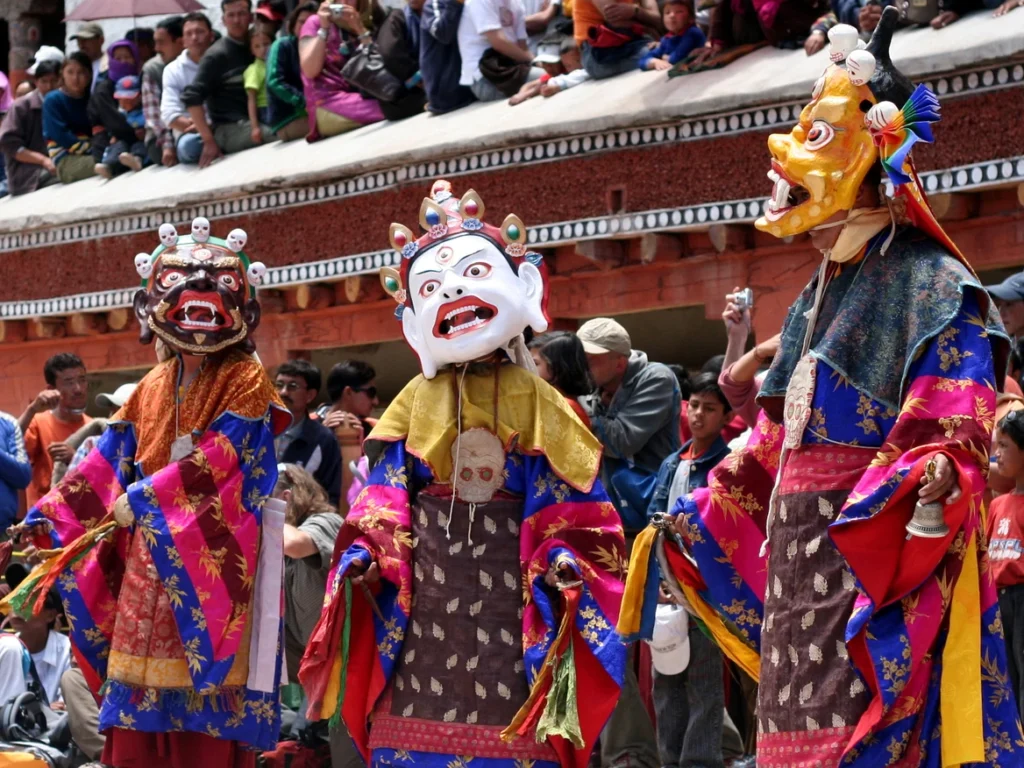
Who doesn’t like a starling and lively experience filled with colors of sacred tradition? The festivals in Ladakh give an insight into ancient Buddhist practices and are known for their traditional dances, ceremonial practices, music, and display of Buddhist art. The festivals of Ladakh are a major tourist attraction and receive a heavy number of visitors from across the world. The festivals celebrated in Ladakh do not fail to mesmerize tourists by showcasing the different cultures that accommodate the region. Here’s a selectively curated list of festivals celebrated in Ladakh that you must attend at least once. Must-visit Festivals in Ladakh Here’s a selectively curated list of festivals celebrated in Ladakh that you must attend at least once: Hemis Festival Yuru Kabgyat Festival Losar Festival Saka Dawa Festival Ladakh Harvest Festival Sindhu Darshan Festival Phyang Tsedup Festival Dosmoche Festival Tak Tok Festival 1. Hemis Festival Tama @ Flickr Hosted in the Hemis gompa, the Hemis festival is celebrated on the 10th day of the Tibetan lunar month. The festival is characterized by the display of a four-story thangka (a Buddhist painting done on cotton) shown once every 12 years. The festival is held to commemorate the founder of tantric Buddhism in Tibet; Guru Padmasambhava. You can find the monks and locals dressed in traditional clothes and beautiful jewelry. The festival is also known for the Cham dance which is an important part of the tantric tradition along with music provided by drums and longhorns giving an ancient aura and attracting tourists from all over the world to this festival. Celebration time: early June for 3 days Location: Hemis monastery, 45 km from Leh city 2. Yuru Kabgyat Festival by travelviewpoint.com The Lamayuru monastery, more commonly known as the moonscape for tourists is the host of this festival. The Yuru Kabgyat festival is celebrated on the 17th and 18th day of the 5th month of the Tibetan calendar. The festival is famous for its Cham dance in which the lamas wear colorful vibrant masks and dance in a circle. The drama dance is the main highlight of this occasion and shows the characters of the god of death, Yama, and Padmasambhava. The festival happens in the presence of Buddhist monks not just from India but also from Bhutan, China, Japan, and Korea. Celebration time: June/July Location: Lamayuru monastery, located about 127 km away from Leh 3. Losar Festival Raju Singh @ Flickr The Losar festival is a celebration of the new year celebrated in its 11th month of the Tibetan calendar. The festival is celebrated all over Ladakh and is characterized by ancient rituals and sacrifices. The people illuminate their houses and decorate them by painting religious symbols and flower arrangements. Delicious food is prepared and fed to the gods, deities, and idols as well as animals. Processions of people chanting slogans to chase away evil are also common during this festival. The people carry out these processions wearing traditional clothes and beautiful vivid masks. The Losar festival is a celebration of tradition. Celebration time: December/January Location: All over Ladakh 4. Saka Dawa Festival by tourmyindia.com The Saka Dawa festival is celebrated on the 4th month of the Tibetan calendar. This month is considered to be the month when buddha gained spiritual awakening. The birth of Buddha is also celebrated in the same month making it one of the holiest Buddhist festivals in Ladakh. This festival is characterized by the changing of the flagpole by the monks. The festival is colorful and vibrant and is celebrated all over Ladakh by doing the cham dance and setting animals free. This spiritual festival will surely give you an insight into the Buddhist culture and its teachings. Celebration time: June Location: All over Ladakh 5. Ladakh Harvest Festival by jetsetquest.com Organized by the Jammu and Kashmir tourism department the Ladakh harvest festival is a mixture of Asian Tibetan and North Indian culture shown beautifully through dances, handicrafts, music, and theatre. The festival consists of a procession through the market of Leh in which troops and villages portray their traditions. The festival celebrates and rejoices in the harvest of crops and promotes as well as maintains Ladakh’s rich heritage. Celebration time: 1-5th September Location: Leh 6. Sindhu Darshan Festival Silver Blu3 @ Flickr The Sindhu darshan festival is celebrated on the full moon of the Guru Poornima and goes on for three days. The festival is celebrated in honor of the river Indus and to promote unity and communal harmony in India. The Sindhu darshan festival is characterized by people bringing pots of water from their states and immersing it in the Sindhu river. A reception ceremony, as well as a series of cultural programs from various parts of India, is arranged by the religious associations of the country. A total of 50 monks recite prayers on the bank of the river Indus to celebrate this festival. The Sindhu darshan festival shows the integrity of the country in the best way possible. Celebration time: 1st – 3rd June Location: Banks of Sindhu river 7. Phyang Tsedup Festival Image Source: Indiaeve The Phyang Tsedup Festival in Ladakh is celebrated to commemorate the teachings of Lord Buddha. This festival is dedicated to Jigten Gombo, founder of the Dringumpa Monastic Dynasty. The festival is celebrated on the 2nd and 3rd day of the 6th month of the Tibetan Calendar which falls in July. During the Phyang Tsedup Festival, rituals of burnt offerings are sacrificed and enthusiastic monks draped in hues of robes and smiling masks dances around the monastery. The locals are clothed in colorful traditional outfits as they worship and make merry on the grounds of the monastery. Celebration time: Mid-July/August Location: Phyang Monastery 8. Domosche Festival Image Source: DDNews The Domosche Festival is one of the most popular festivals celebrated in Ladakh. This festival

